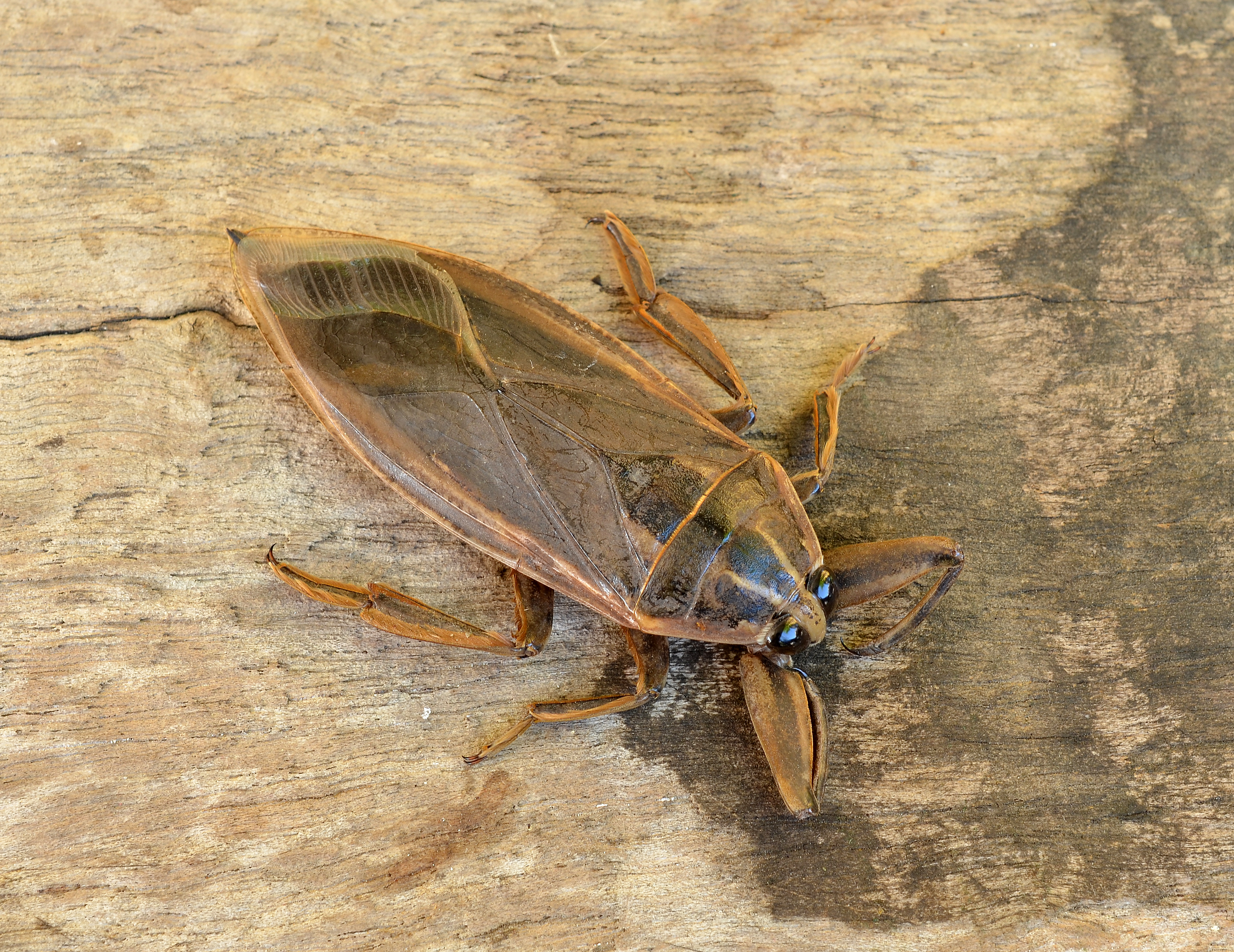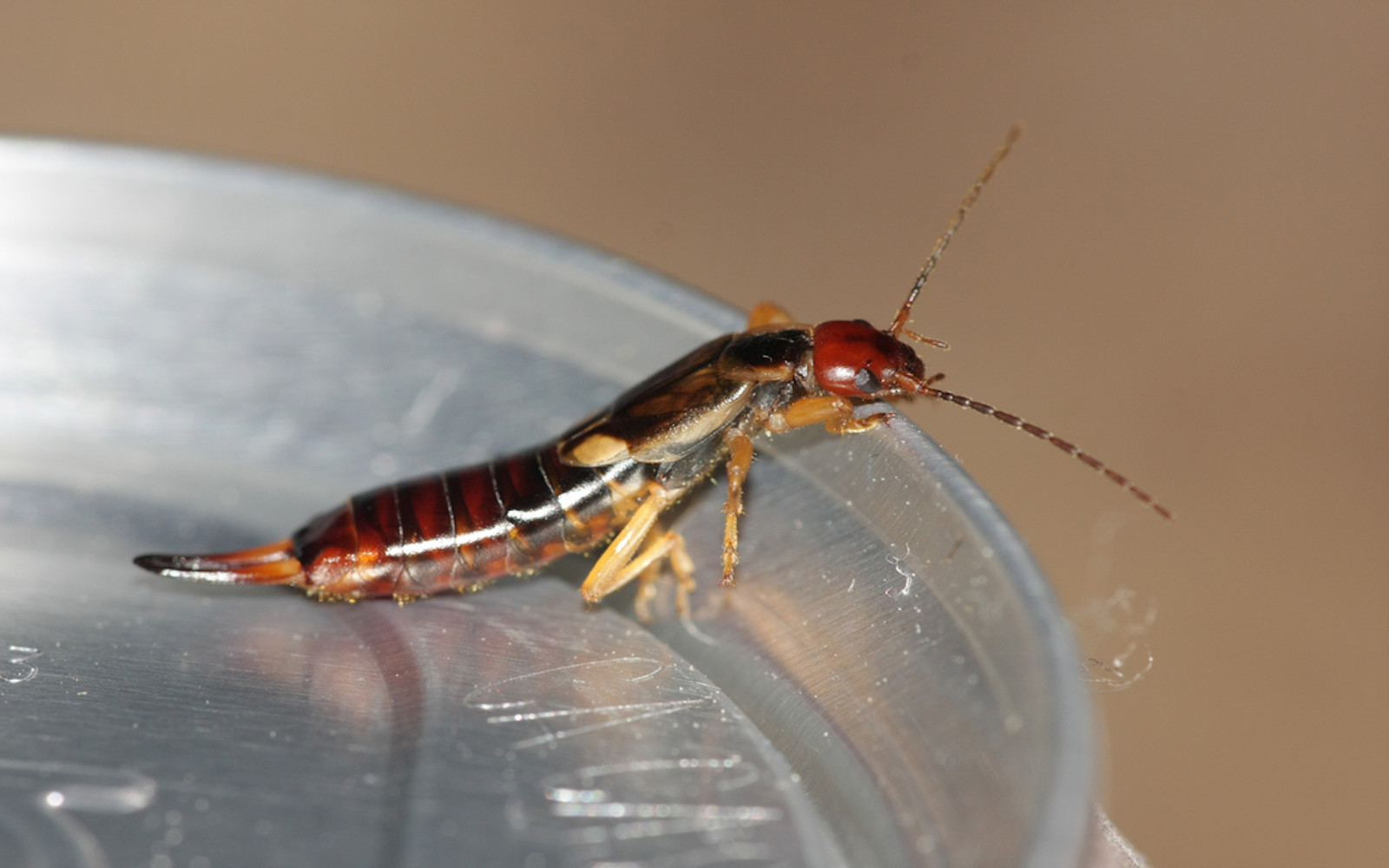Giant Water Bugs

Identification
Color: Tan or dark brown
Size: 2” to 4”
Legs: 6
Antennae: No
Shape: Oval, elongated body
Region: Found throughout the United States and North America
What is a Giant Water Bug?
Giant water bugs, commonly nicknamed toe-biters, sewer cockroaches, and electric light bugs, are large, predatory insects found in slow-moving bodies of water. These insects are one of the largest found in North America. While giant water bugs can be beneficial because they feed on pests including mosquito larvae, they can inflict painful bites if disturbed.
What Do Giant Water Bugs Look Like?
Giant water bugs are typically tan or dark brown in color with oval, flat bodies. They have a short, pointed beak on the underside of their heads that is used to attack prey. Their wings overlap at the bottom end of the abdomen in an “X” shape.
While giant water bugs are often mistakenly identified as cockroaches, they lack the long antennae that cockroaches have.
These aquatic predators live in slow-moving or stagnant bodies of water, like ponds or streams. They typically hide in vegetation in search of potential prey. To feed, giant water bugs pierce their subjects with its sharp beak and inject a strong venom. This venom paralyzes the prey and liquifies the inside of the prey’s body for feeding. Giant water bugs are known to feast upon a wide variety of small animals, including other insects, crustaceans, fish and amphibians.
During the spring and summer, giant water bugs emerge from the water in search of mates. Once emerged, they are attracted to bright electric lights, which is why they are often called “electric light bugs.”
If giant water bugs are stepped on or handled by humans, they will bite to defend themselves. Their venomous bites are known to be intensely painful. If you are bitten by a giant water bug, immediately wash the bite and treat the area with antiseptic as necessary. Medical experts advise taking over-the-counter medications, including ibuprofen and aspirin, to treat the pain.
Seeking medical treatment isn’t typically necessary for giant water bugs bites. However, if you start showing signs of an allergic reaction (including swelling, itching, hives or difficulty breathing), seek medical attention immediately.
Giant water bugs will not attempt to prey upon humans, but they can bite if they feel threatened. Their venomous bites are intensely painful and, in rare cases, can trigger allergic reactions.
Because giant water bugs live in bodies of water, they are not usually found inside the home. Infestations may occur in bodies of water in the backyard, including ponds. Large groups of giant water bugs may also swarm around outdoor lights at night. If you suspect an infestation on your property, contact a pest control professional, also known as an exterminator, to discuss solutions.
The first step to getting rid of giant water bugs is to prevent them from entering the home by sealing off possible points of entry. Ensure all cracks or holes in exterior walls are sealed with caulk or steel wool, repair any deteriorated weather stripping, install door sweeps and repair any torn screens.
To avoid attracting giant water bugs to your property, consider replacing outdoor lighting with yellow bulbs that are less appealing to insects.
If you see giant water bugs in and around your home, it’s important to take quick steps to eradicate an infestation. Contact a qualified exterminator immediately if you suspect a giant water bug infestation. You can find a certified pest professional near you with the helpful zip code search below.




